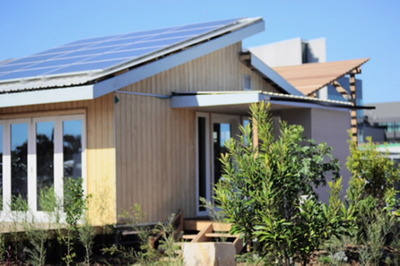Schneider Electric sponsors Solar Decathlon
The Solar Decathlon is considered the largest sustainable building research and innovation competition in the world. The event features teams from 20 universities around the world who compete to design, build and operate solar-powered houses that are cost effective and energy efficient.
The competition originated in the US and now has versions in Europe and, most recently, China (which commenced on 2 August and runs until 11 August). The winner is the team that best blends affordability, consumer appeal and design excellence with maximum efficiency.
Schneider Electric sponsors each of the events, one of their major contributions being the electrical distribution equipment required to connect the solar village to the utility service for the duration of the event. The company’s products are also used by the participants to make their house as energy efficient as possible, while its power meters record the levels of energy being used and its UPSs ensure critical power.
“The competition is a perfect opportunity for university students to gain experience and shape their careers,” said Michel Orlhac, vice president of marketing, Schneider Electric. “Globalisation of the competition means that more and more people are exposed to the innovations in sustainable technologies. The contest highlights the most important players in the new energy market, and every edition is different and brings new ideas.”
Representing Australia at the 2013 Solar Decathlon China is the University of Wollongong (Team UOW) with its Illawarra Flame house - a demonstration of how typical Australian homes built in the 1950-60s can be retrofitted with a range of environmentally advanced technologies.

Jack Breen, Marketing and Communications Manager of Team UOW, said the team “clearly understands that as a society with the goal of a sustainable future, we need to find an effective way to make our existing houses energy efficient - in a way that is beautiful, functional and affordable”.
To help them achieve this goal, Schneider Electric has donated a C-Bus Control system, along with occupancy and light sensors, sweep fan control relay, a 6.4″ C-Touch colour touch screen and more. Breen was particularly appreciative of the C-Bus system, noting that it “allows the occupant of the house to control the lighting, air conditioning and ventilation and to monitor the energy use. By making energy use visible, the occupants can then identify ways to reduce it.”
After successfully completing the Illawarra Flame in Australia, Team UOW is now reassembling it for the competition. Alongside the other entries, it will be judged on 10 aspects of housing design: architecture, market appeal, engineering, communications, solar application, thermal comfort, hot water, appliances, home entertainment and energy balance.
At the time of writing, Team UOW is coming fourth in the competition. But even if the team does not win, its work will carry on. Breen explained that the project’s research will “live on and continue at the Sustainable Buildings Research Centre (SBRC) as the house becomes a living laboratory”.
The skills and knowledge gained from the project are also being passed on to current and future tradesmen.
Merger strengthens RSK Australia's regional services
Projence and Western Project Services have merged under the Projence brand, to improve the...
Reaching net zero in the manufacturing sector
Sustainable solutions such as 'green concrete' and carbon tracking were presented at the...
Reducing upfront carbon in built environment: report
ASBEC has released a report aiming to reinforce and amplify government and industry efforts...










